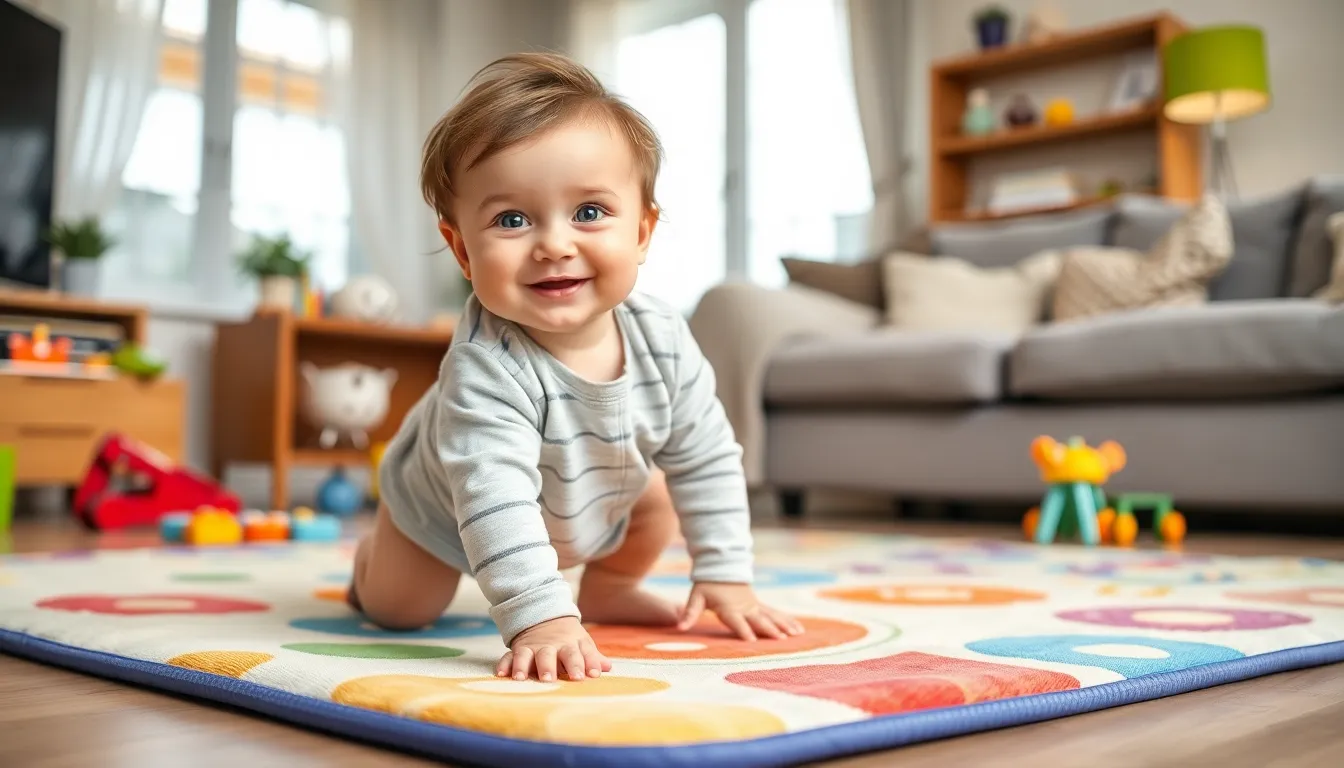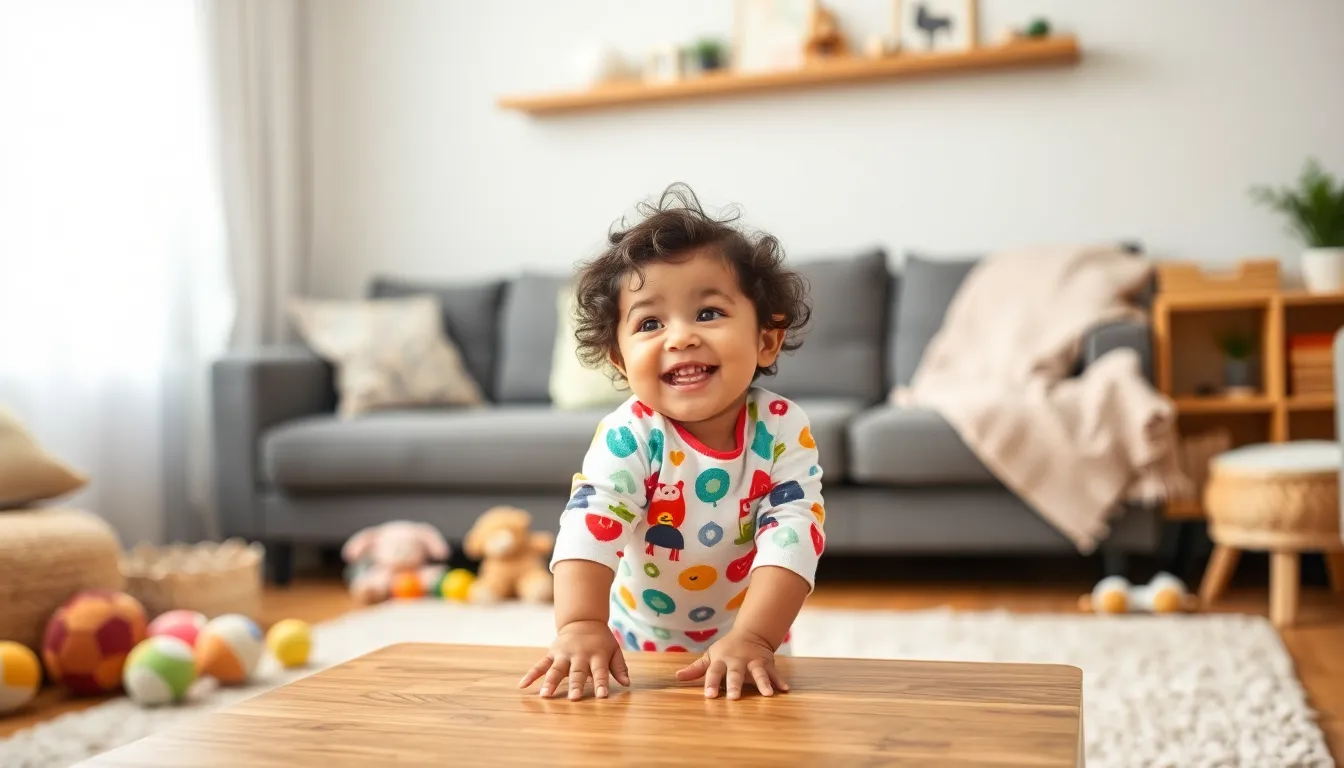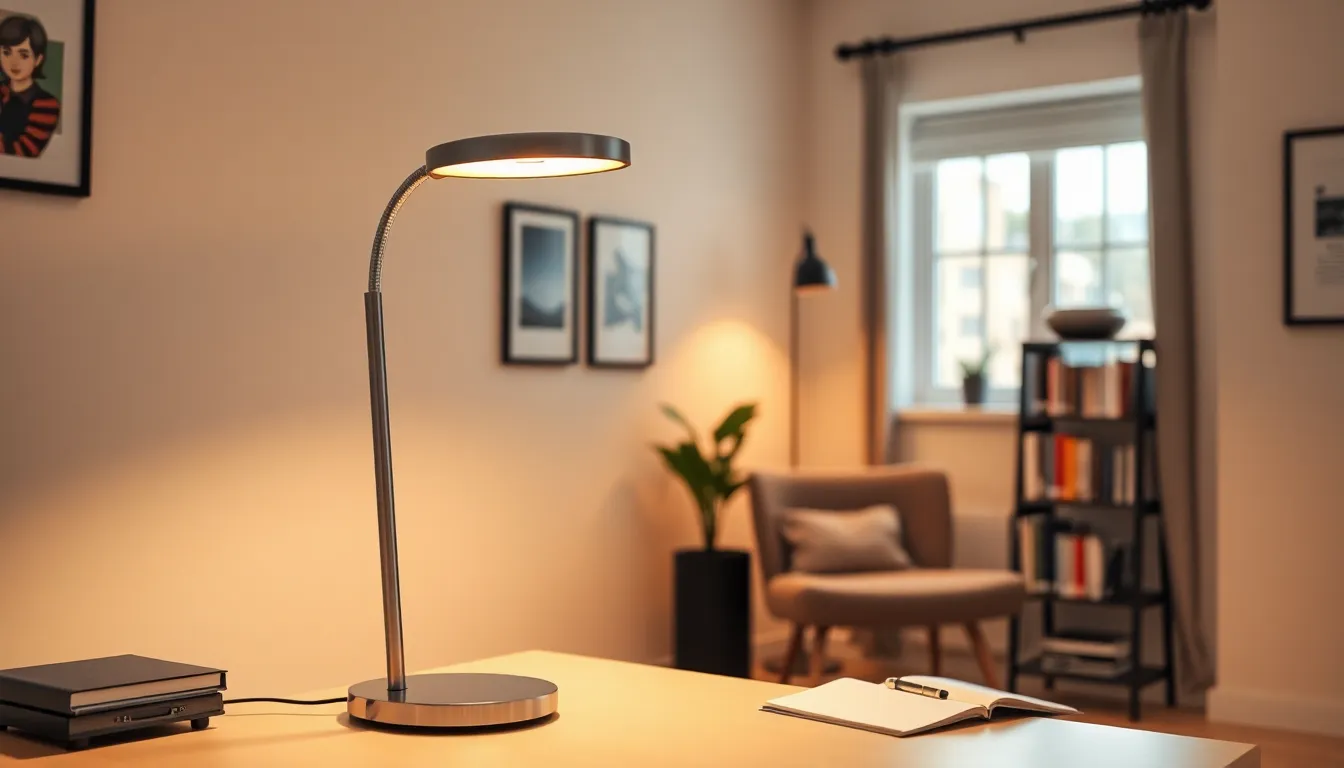Every parent knows that the journey from crawling to walking is filled with adorable milestones and a few surprises. One moment, a baby’s happily rolling around, and the next, they’ve decided that pulling themselves up to stand is the new trend. But when exactly does this gymnastic feat begin?
Table of Contents
ToggleUnderstanding Baby Development Milestones
Baby development milestones signal important changes in a child’s growth. Typically, babies start pulling themselves up between 9 to 12 months. This action shows increased strength and coordination. He or she builds muscle by practicing movements like rocking back and forth before standing.
Pulling up is often part of a sequence that includes crawling and sitting up. As babies explore their surroundings, their confidence increases. They might use furniture for support during this phase. Encouragement from parents promotes exploration and safety during attempts to pull up.
Observing physical cues helps parents recognize readiness. Babies may demonstrate interest in standing by reaching for objects. Maintaining a stable base while attempting to rise is crucial. In addition, some babies might skip crawling altogether, going directly from sitting to standing.
Every baby develops at their own pace, so variations exist. Environmental factors, like space and opportunity to practice, influence milestones. Parents can create supportive spaces by removing obstacles while providing safe furniture for assistance. Introducing toys that encourage pulling up can also foster this important skill.
Tracking progress involves noting each stage of development. Pulling up typically leads to cruising, where babies walk while holding onto furniture. Milestones are indicators of overall health and development. Consult pediatricians if concerns arise regarding a baby’s progress in reaching these milestones.
When Do Babies Start Pulling Themselves Up?

Babies typically start pulling themselves up between 9 to 12 months. This milestone demonstrates increased strength and coordination.
Typical Age Range
Babies often exhibit notable changes in mobility by this age. Most infants begin pulling up to stand around 9 months, though some may start as late as 12 months. Each baby develops at their own pace, so parents should focus less on exact timelines and more on individual progress. Observing a baby’s readiness may involve watching for signs like strong arm and leg movements. These signals indicate that pulling up is imminent.
Factors Influencing Development
Several factors can influence when a baby starts pulling themselves up. Genetic predisposition plays a role, as parents may notice similarities in developmental timelines among siblings. Likewise, the home environment significantly impacts this growth phase. Safe exploration spaces encourage babies to practice pulling up and standing. Engaging with caregivers also fosters confidence. Regular tummy time strengthens muscles necessary for this milestone. Finally, overall health status can affect a baby’s progress, so consulting a pediatrician regarding concerns remains important.
Signs Your Baby Is Ready to Pull Up
Recognizing readiness in a baby for pulling up is crucial for their development. Several signs indicate that they’re prepared for this exciting milestone.
Physical Readiness
Strong arms and legs represent the first indicators of physical readiness. Babies exhibit increased upper body strength through frequent pushing and pulling movements. A baby might also display stable sitting ability, which enhances balance. Reaching for toys while on their stomach encourages further development. Intense leg movements, such as kicking or reclining backward, suggest a desire to stand. Coordination improves with regular tummy time, allowing babies to practice foundational skills. Parents should observe these physical cues, as they signal the gradual transition towards standing.
Emotional Readiness
Emotional readiness plays a vital role in pulling up as well. Increased curiosity about surroundings drives babies to explore. A baby displaying willingness to try new things indicates readiness for more adventurous movements. Cheerful reactions to standing or pulling up suggest confidence and comfort. They may also look for reassurance from caregivers during this process. Positive encouragement helps in fostering emotional security. Engagement from parents, such as clapping or happy voices, further boosts a baby’s confidence. Each new attempt reinforces their emotional development and readiness for standing.
Supporting Your Baby in This Milestone
Supporting a baby through the process of pulling themselves up involves creating an environment that fosters safety and independence.
Safe Playing Environment
Creating a safe playing environment is crucial for babies learning to pull themselves up. Remove sharp objects and any potential hazards from the area. Use soft surfaces, such as play mats or rugs, to cushion falls. Arrange furniture strategically, ensuring that sturdy items are within reach for support. Avoid clutter, which can pose tripping risks and limit mobility. Keeping the space organized allows babies to explore freely. Parents should always supervise during playtime to ensure the baby remains safe throughout their practice.
Encouraging Independence
Encouraging independence starts by providing opportunities for babies to experiment with standing. Offer support without taking over the task, allowing babies to figure out their movements. Use toys that entice the baby to reach and pull themselves up. Engage in activities that promote exploration, such as encouraging them to move from sitting to standing positions. Celebrate every small achievement, as positive reinforcement builds confidence. Encourage a sense of curiosity by placing interesting objects just out of reach, inspiring the baby to make efforts towards standing.
Watching a baby pull themselves up is a remarkable milestone that marks significant growth in strength and coordination. This exciting phase not only showcases a child’s developing physical abilities but also their curiosity about the world around them. By fostering a safe and supportive environment, parents can encourage their little ones to explore and gain confidence.
Every child develops at their own pace, and it’s essential to celebrate each achievement along the way. If parents have any concerns about their child’s development, consulting with a pediatrician can provide reassurance and guidance. Embracing this journey together makes it even more rewarding for both the child and their caregivers.




